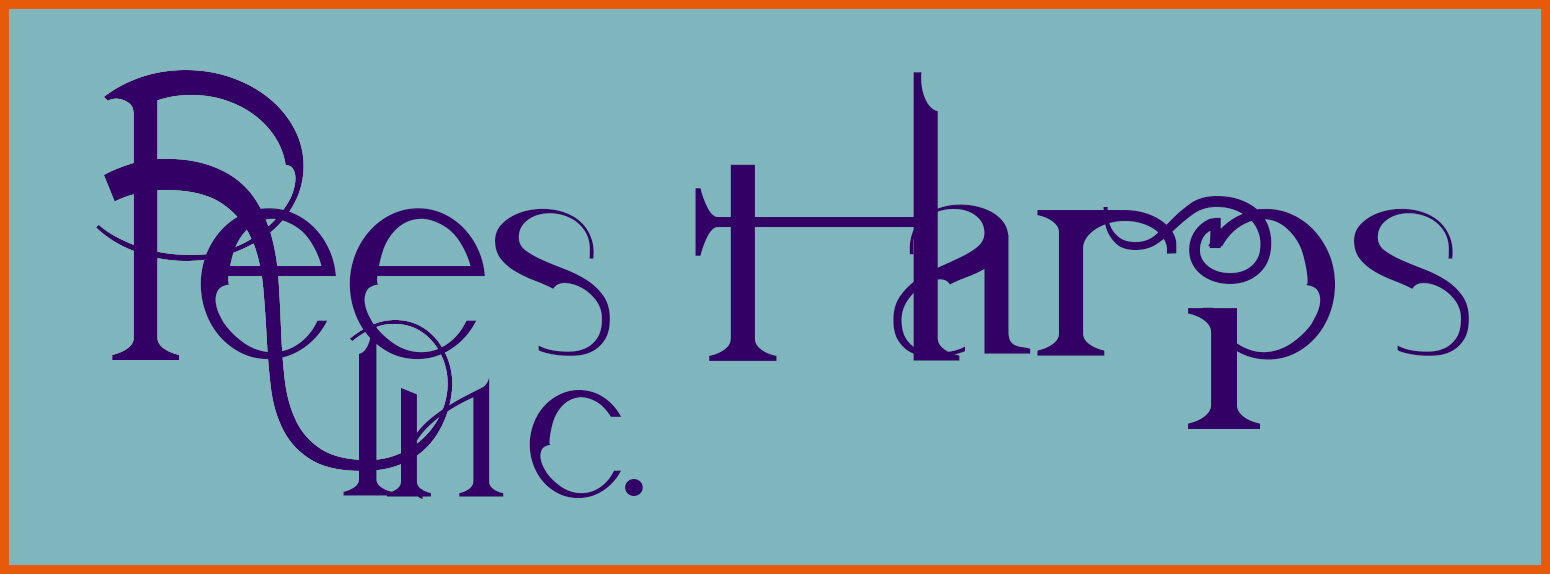Why Soundboards Belly-Up
Properly made harp soundboards belly-up in the bass forming a very mild upward curve.
Why does a soundboard rise and belly-up? Because that's what it is designed to do. Luthiers want a harp soundboard which is thin enough to rise but not so thin that it will explode. We want the energy and vibration that we get when a string drives frequency into a sensitive soundboard and the notes dance out. During the first couple of months you have your harp, the soundboard will still be rising. Eventually it will set and that is often the point at which players say they can hear the voice of their harp "open up." It is, my friends, a glorious sound.
When a well made lever harp is first completed the soundboard is flat. Each day when the new harp is tuned the strings are tightened but because the strings are all new they keep stretching so they need to be tuned repeatedly over the first few weeks. Eventually, the strings reach mechanical stability. This is that first phase of new harp ownership and it can be a bit trying. Think of it like a one year-old golden retriever. They are a fabulous breed but at one they have just a bit too much energy for their own good. In the Rees family we call that time the "duppy" year. It is the year when a dog is no longer a puppy but has not grown into its adult nature. While the strings of your new lever harp are first stretching and the soundboard has not yet set, your harp is, basically, a duppy.
If you look at your harp, the top of each string is wrapped around the tuning pin which is firmly seated in the arch. When a string is tightened the force it exerts wants to pull the arch sideways because all the strings are on the same side. This is why lever harp lutheries all do something to ensure the the arch is prevented from pulling over. At Rees we use our tulip brace for this purpose. A Rees Aberdeen Meadows harp has approximately 1200 pounds of string pressure pulling on the arch. That is an enormous amount of force so all of the hardware in the arch and the cells of the wood are adjusting to being under so much pressure. You can't really see it but things are moving just the tiniest bit inside the arch.
Meanwhile, at the other end of the string that same 1200 pounds of force is pulling straight up. If what we all wanted was a flat soundboard the fix would be easy, we would just add thickness and bracing to the wood. The thing about harps is that what we actually want is a great voice and the real trick in harp lutherie is that an amazing voice only comes from walking a very fine line. On one side of the line we have the dull, thumpy, quiet voice of an overly reinforced soundboard. On the other side we have really expensive toothpicks, the remnants of an exploded soundboard. In between is the narrow margin where spectacular harp voices live.
When your harp is new and the strings are stretching while the soundboard is rising, you will be going through that awkward duppy period but, have faith, it will pass quickly and you will soon be at that point when harpers refer to the voices of their harps as having "opened up." Once you are there that, my friend, is the beginning of years of joy.
Thin, Vertical Cracks
There is one other thing harp owners worry about when the soundboards of their new harps are first bellying-up and that is very fine vertical cracking either in the lacquer of the finish or in the veneer on the soundboard. This too is a natural process and the result of a harp being under so much more pressure than other stringed instruments. It is nothing to worry about unless the cracking goes deeper than the veneer and actually goes into the solid wood underneath. This is very, very rare but know this, if you can see it from the back, your harp has a problem and, if it is a Rees, that problem is under warranty and we will immediately repair or replace your harp.


